 |
recursIV
Modeling and Rendering of Natural Phenomena for Outdoor Virtual Environments
Project duration:
1996-1997
Contact:
Dieter Schmalstieg
|
Description
|
Computer generated images are expected to look realistic. For virtual outdoor
environments, this involves presenting models of trees, plants, mountains and
other natural phenomena that are usually very complex objects.
|
Application
|
Outdoor scenes are required for flight simulation, urban reconstruction,
landscape development, architectural simulation, geographical information
systems and any kind of virtual environment that involves a real-world
surrounding.
|
Problems
|
Natural phenomena are very complex objects (just think of the number of
leaves on a tree). They are hard to create, consume a lot of storage, and
take a long time to transmit over a network.
|
Approach
|
recursIV is a software capable of direct rendering of natural phenomena such as trees, plants or mountains from a procedural representation at interactive frame rates. Our approach is based on directed cyclic graphs. It allows to represent extremely complex scenes with little memory and modeling effort. Very large scale virtual environments are supported by a bandwidth-preserving networking approach that makes use of the compact representation and on-the-fly database amplification. The implementation was
done on top of Silicon Graphics' Open Inventor software toolkit. The resulting software is called
recursIV.
|
Publication
|
 Modeling and Rendering of Outdoor Scenes for Distributed Virtual Environments
:
Modeling and Rendering of Outdoor Scenes for Distributed Virtual Environments
:
D. Schmalstieg, M. Gervautz
|
 Download SGI (IRIX) demo executable of recursIV (ZIP file, 0.7MB)
Download SGI (IRIX) demo executable of recursIV (ZIP file, 0.7MB)
Here we present some sample images created with recursIV. Note that all these scenes can be viewed
at interactive frame rates. Click on the pictograms for full-scale images!
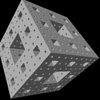
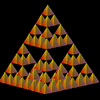
Linear fractals such as the Menger sponge and the Sierpinsky tetrahedron can be represented with
directed cyclic graphs.
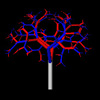
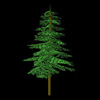
With a simple recursion, sympodial branching structure can be created. Recursion depth controls the
development of the structure and is not a very good measure to control level of detail. Instead,
whole subgraphs should be replaced by appropriate simpler structures, such as exercised for the conifer
tree.
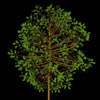
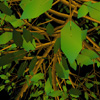
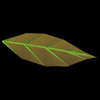
Unlike texture-mapped trees usually used for flight simulators and similar applications, a recursIV tree
exhibits detail also at close-ups. This can be done excessively (such as modeling the veins of individual
leaves), if the image generator is powerful enough.
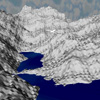
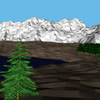
Natural phenomena such as terrain and trees can be combined for realistic outdoor scenes.
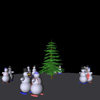

Combination of procedural and conventionally modeled geometry is easily possible. For example, the
christmas tree twig is a procedural model, while Santa's head was modeled in 3D Studio.
This project was inspired by
Christoph Traxler's work on
raytracing of cyclic CSG-Graph.
Check out this beautiful work!
To ease development of natural phenomena, an interactive editor called
LSYS was developed as a student project by
Markus Kaar.
This page is maintained by Dieter Schmalstieg. It was last updated on October 29, 1997.
If you have any comments, please send a message to dieter@cg.tuwien.ac.at.

 Modeling and Rendering of Outdoor Scenes for Distributed Virtual Environments
:
Modeling and Rendering of Outdoor Scenes for Distributed Virtual Environments
:










